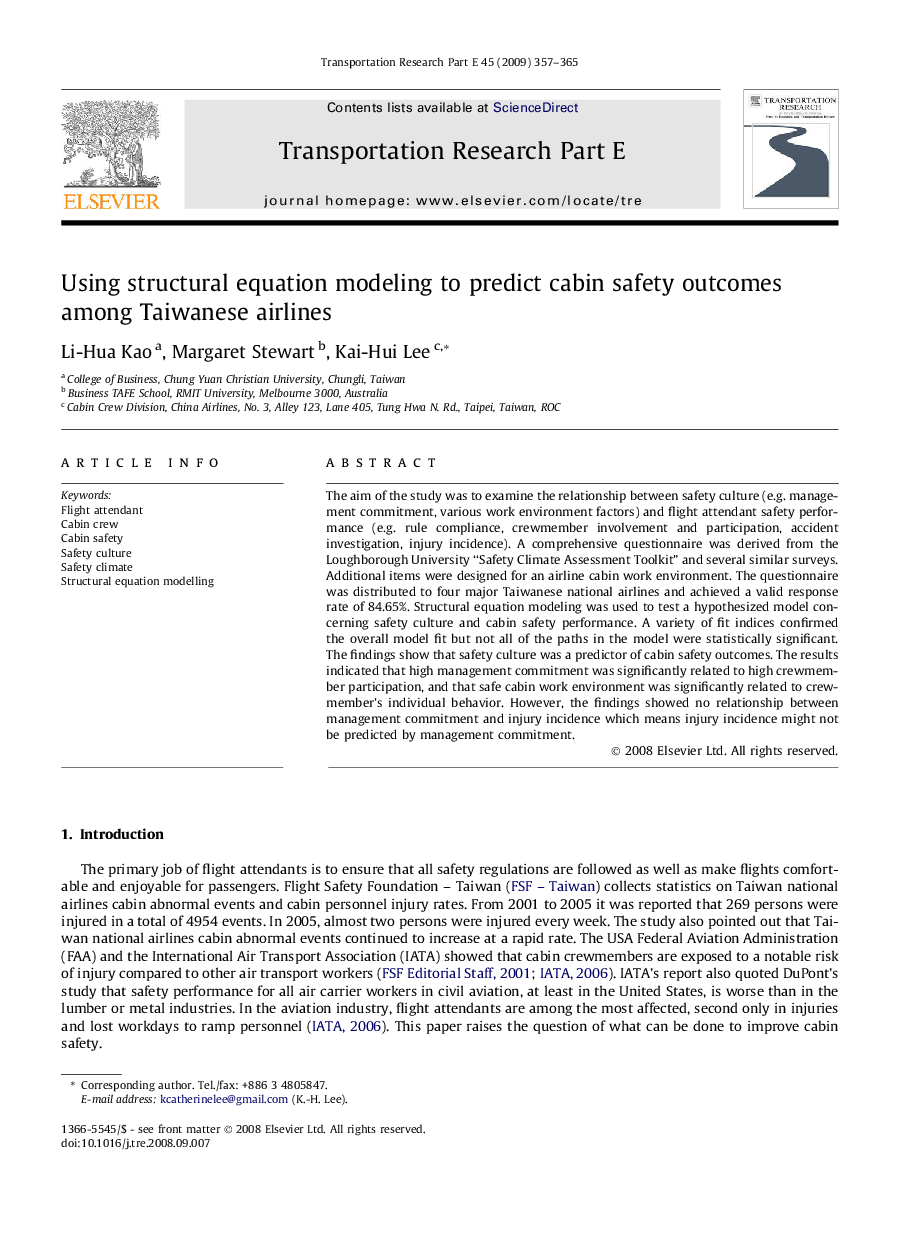| Article ID | Journal | Published Year | Pages | File Type |
|---|---|---|---|---|
| 1023777 | Transportation Research Part E: Logistics and Transportation Review | 2009 | 9 Pages |
The aim of the study was to examine the relationship between safety culture (e.g. management commitment, various work environment factors) and flight attendant safety performance (e.g. rule compliance, crewmember involvement and participation, accident investigation, injury incidence). A comprehensive questionnaire was derived from the Loughborough University “Safety Climate Assessment Toolkit” and several similar surveys. Additional items were designed for an airline cabin work environment. The questionnaire was distributed to four major Taiwanese national airlines and achieved a valid response rate of 84.65%. Structural equation modeling was used to test a hypothesized model concerning safety culture and cabin safety performance. A variety of fit indices confirmed the overall model fit but not all of the paths in the model were statistically significant. The findings show that safety culture was a predictor of cabin safety outcomes. The results indicated that high management commitment was significantly related to high crewmember participation, and that safe cabin work environment was significantly related to crewmember’s individual behavior. However, the findings showed no relationship between management commitment and injury incidence which means injury incidence might not be predicted by management commitment.
